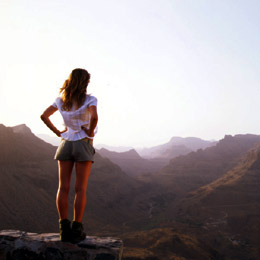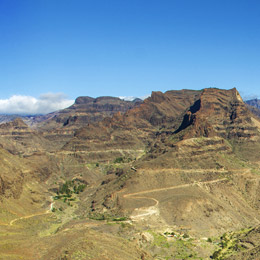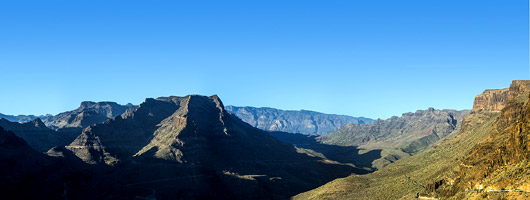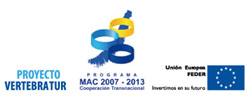This viewpoint is located on the western border of the Macizo de Amurga, overlooking the Barranco de Fataga. This ravine is carved out of the lava flows of phonolitic rocks, which at the cusp of Amurga can be 500 m thick. These powerful lava flows correspond to the final phases of the first volcanic cycle in Gran Canaria, and would have been thrown up between 11 and 12 million years ago. The phonolitic rocks are widely used in manufacturing concrete and in tarmac on roads, hence the existence of a number of quarries like the one we can see in the Barranco de Fataga.


Here we can enjoy views of the semi desertlike vegetation typical of the lower areas of the Canaries, with the common “tabaibal-cardonal” plants that abound here. The sweet “tabaiba” (Euphorbia balsamifera) is characteristic of this area, and produces a rubber sap with a slight burning sensation which when dry used to be used as a chewing gum ; while the other dominating species, the “cardón” (Euphorbia canariensis), with its cactus like appearance and strong rubbery sap, has played an important role in the maintaining of the biodiversity, as its interior allows other plants to prosper which otherwise would be eaten by flocks that have been grazing in this ecosystem for many years.

The landscape at the bottom of the ravine features the Canary Palm tree (Phoenix canariensis) which has been an ever present in this ravine and the surrounding areas.
Other botanical treasures living in these gullies include the Gran Canaria dragon tree (Dracaena tamaranae), a rare species not found anywhere else.
From an archaelogical point of view the Necropolis of Arteara is a stand out feature, with funeral tombstones located over the deposit of rocks which came about from the collapse of a great gully.
From 300 m above sea level, this territory becomes part of the World Biosphere Reserve of Gran Canaria, so declared by UNESCO on 29th June 2005.
